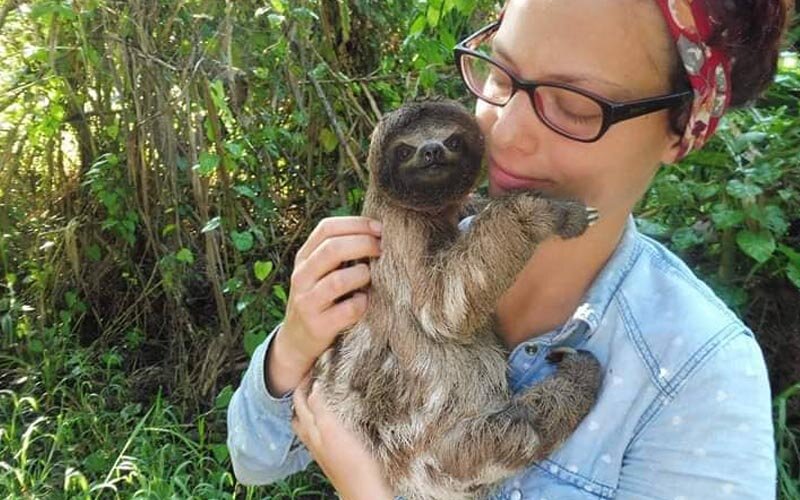In the lush depths of the rainforest canopy, where sunlight filters through dense foliage and life teems in every corner, resides one of nature’s most enigmatic creatures: the sloth. With its slow and deliberate movements, adorned in a coat of mossy green, the sloth embodies the essence of tranquility amidst the bustling biodiversity of the rainforest. As a symbol of serenity and adaptation, the sloth has captivated the imaginations of wildlife enthusiasts and researchers alike.
In this exploration, we’ll venture into the heart of the rainforest to unravel the mysteries of the sloth, delving into its unique characteristics, ecological importance, and enduring allure.
Sloth: The Guardian of the Rainforest Canopy
Sloths are arboreal mammals belonging to Bradypodidae and Megalonychidae, native to the rainforests of Central and South America. These intriguing creatures are renowned for their slow and deliberate movements, earning them the title of the world’s slowest mammal. Despite their leisurely pace, sloths are highly adapted to life in the treetops, where they spend most of their lives.
Characteristics of Sloths:
Slow Metabolism: Sloths have a prolonged metabolic rate, allowing them to conserve energy and minimize food intake. This adaptation enables sloths to survive on a diet of nutrient-poor leaves and vegetation.
Specialized Limbs: Sloths possess long, curved claws and specialized limb structures that are ideal for gripping tree branches and navigating the dense foliage of the rainforest canopy.
Cryptic Coloration: Sloths’ fur often harbors algae and moss, giving it a greenish hue that blends seamlessly with its arboreal surroundings. This cryptic coloration provides camouflage against potential predators.
Sedentary Lifestyle: Sloths are predominantly sedentary animals, spending up to 20 hours per day resting or sleeping in the canopy. Their slow movements and low activity levels help them conserve energy and avoid detection by predators.
Ecological Importance of Sloths:
Sloths play a vital role in the ecological balance of the rainforest ecosystem, serving as both consumers and dispersers of plant material. Their unique adaptations and behaviors contribute to the following environmental functions:
Seed Dispersal: Sloths consume various fruits and vegetation, dispersing seeds across the rainforest as they move from tree to tree. Their slow movements and extended periods spent in one location allow seeds to pass through their digestive tract intact, aiding in the dispersal and germination of plant species.
Habitat Engineering: By feeding on leaves and branches, sloths help shape the structure of the rainforest canopy, creating pathways and openings that benefit other arboreal species. Their selective feeding habits can also influence the composition and diversity of plant communities.
Nutrient Cycling: Sloth feces contribute to nutrient cycling in the rainforest ecosystem, enriching the soil with essential nutrients and organic matter. This process supports vegetation growth and sustains the forest ecosystem’s overall productivity.
Why People Are Fascinated by Sloths:
The enduring fascination with sloths can be attributed to several factors, including their unique adaptations, captivating appearance, and perceived embodiment of tranquility. Here are some reasons why people are drawn to these remarkable creatures:
Slow and Deliberate Movements: Sloths’ unhurried pace and relaxed demeanor evoke a sense of calm and serenity, resonating with individuals seeking refuge from the fast-paced world.
Adorable Appearance: With their endearing facial expressions and gentle demeanor, sloths have become icons of cuteness and charm in popular culture and media.
Cryptic Camouflage: Sloths’ cryptic coloration and mossy fur add to their allure, inspiring admiration for their ability to blend seamlessly into their rainforest habitat.
Mysterious Behavior: Sloths’ enigmatic lifestyle and slow-motion antics have sparked curiosity and intrigue, prompting researchers and enthusiasts to unravel the mysteries of these captivating creatures.
Symbol of Conservation: Sloths serve as ambassadors for rainforest conservation, highlighting the importance of preserving their habitat and protecting the biodiversity of tropical ecosystems.
Conclusion:
In the realm of the rainforest canopy, where life unfolds in a symphony of colors, sounds, and sensations, the sloth stands as a tranquil guardian of biodiversity and balance. With its slow and deliberate movements, cryptic appearance, and essential ecological role, the sloth embodies the harmony and resilience of nature’s most diverse ecosystems. As we continue to explore and appreciate the wonders of the rainforest, let us cherish the presence of these remarkable creatures and work together to ensure their survival for generations to come.
